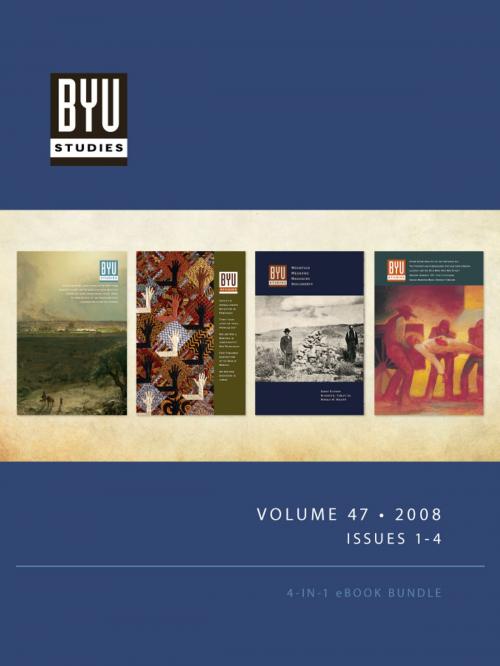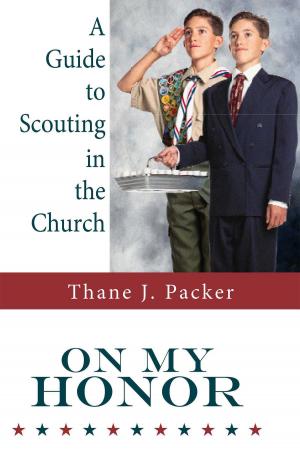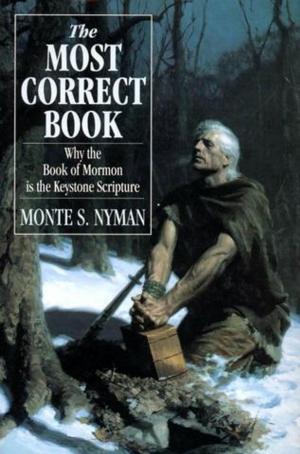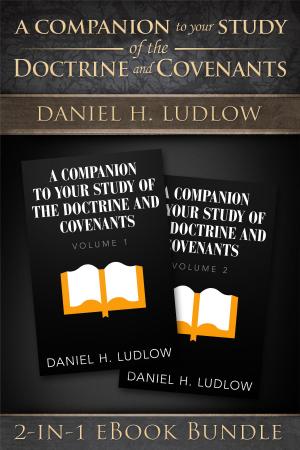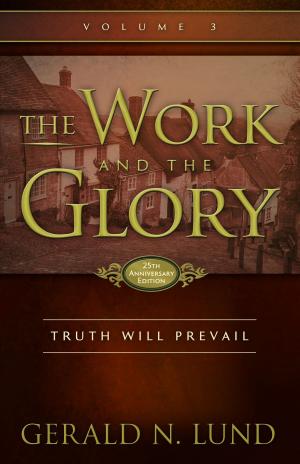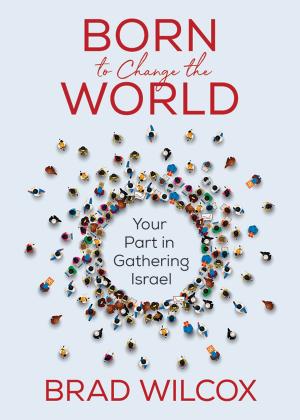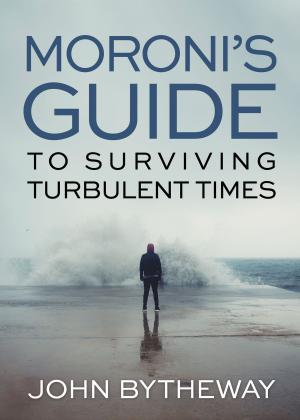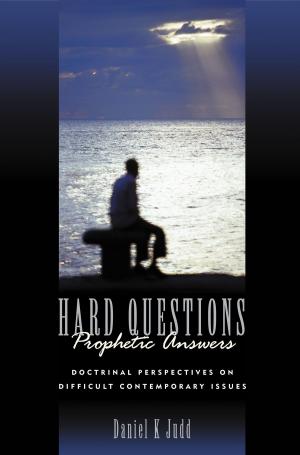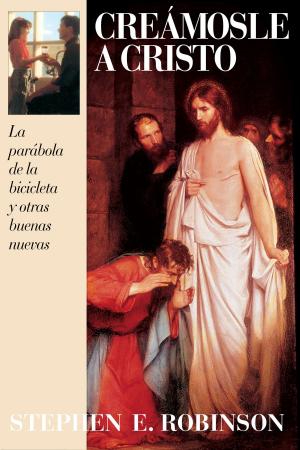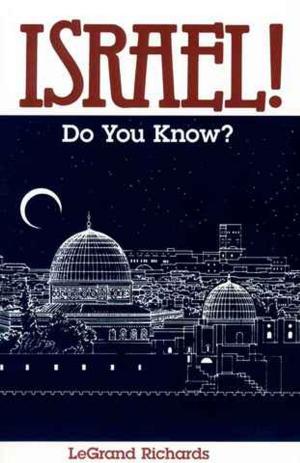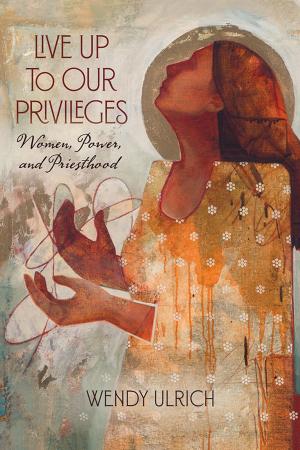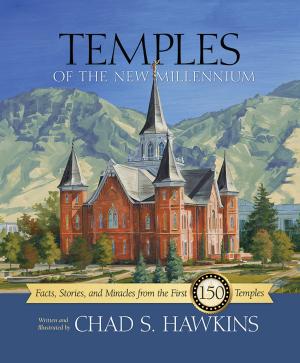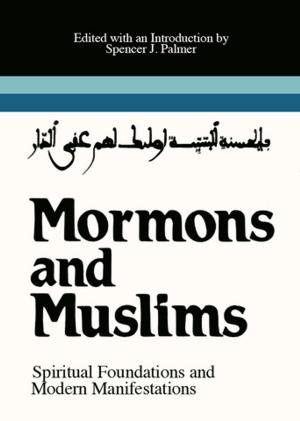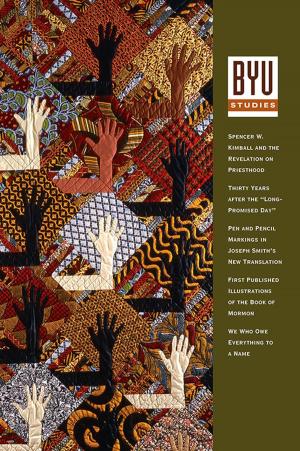BYU STUDIES Volume 47 • 2008 • Issues 1-4
Nonfiction, Religion & Spirituality, Christianity, Denominations, Mormonism| Author: | BYU Studies | ISBN: | 9781938896842 |
| Publisher: | Deseret Book Company | Publication: | May 16, 2014 |
| Imprint: | BYU Studies | Language: | English |
| Author: | BYU Studies |
| ISBN: | 9781938896842 |
| Publisher: | Deseret Book Company |
| Publication: | May 16, 2014 |
| Imprint: | BYU Studies |
| Language: | English |
In BYU Studies volume 47, number 1, Jeff Walker examines preemption rights and land surveying practices in Missouri. After surveying was finished, these preemption rights were an impetus for Missouri land speculators to force Mormons from the state. Blair G. Van Dyke and LaMar C. Berrett look at eleven apostolic dedications of the Holy Land. An 1842 document by the Twelve Apostles tells the Saints in Europe how to gather their resources and emigrate. This epistle is significant not only for its message, but for what it says about the role of Twelve in 1842.
In volume 47, number 2, Edward L. Kimball traces the history of the position of the Church on blacks and the priesthood, and the process by which President Kimball became convinced that the time for change had come and how he involved his counselors and the Twelve in preparing for the divine manifestation that followed. Marcus H. Martins, the first black missionary called after the revelation, reflects on what the priesthood policy change has meant in his own life. Noel Carmack looks at the first published illustrations illuminating the Book of Mormon (1888).
In volume 47, number 3, a special issue pertaining to the Mountain Meadows massacre, guest editors Richard E. Turley Jr. and Ronald W. Walker include selections of important documents about the massacre. In 1892, historian Andrew Jenson interviewed Utahns who had information about the massacre. Several years later, David H. Morris, an attorney living in St. George, Utah, collected affidavits and statements about the massacre from long time residents as he had contact with them in other dealings.
In volume 47, number 4, authors Joseph Lyon and David Lyon examine eyewitness accounts of the assassination of Joseph and Hyrum Smith and the physical evidence of the crime scene in Carthage Jail. David Paulsen examines Søren Kierkegaard's and Joseph Smith's radical critiques nineteenth-century Christian culture and shows them to be mutually reinforcing. Steven Harper examines original manuscripts of Doctrine and Covenants 104 to clarify the connection between D&C 104:18 and Luke 16:23.
In BYU Studies volume 47, number 1, Jeff Walker examines preemption rights and land surveying practices in Missouri. After surveying was finished, these preemption rights were an impetus for Missouri land speculators to force Mormons from the state. Blair G. Van Dyke and LaMar C. Berrett look at eleven apostolic dedications of the Holy Land. An 1842 document by the Twelve Apostles tells the Saints in Europe how to gather their resources and emigrate. This epistle is significant not only for its message, but for what it says about the role of Twelve in 1842.
In volume 47, number 2, Edward L. Kimball traces the history of the position of the Church on blacks and the priesthood, and the process by which President Kimball became convinced that the time for change had come and how he involved his counselors and the Twelve in preparing for the divine manifestation that followed. Marcus H. Martins, the first black missionary called after the revelation, reflects on what the priesthood policy change has meant in his own life. Noel Carmack looks at the first published illustrations illuminating the Book of Mormon (1888).
In volume 47, number 3, a special issue pertaining to the Mountain Meadows massacre, guest editors Richard E. Turley Jr. and Ronald W. Walker include selections of important documents about the massacre. In 1892, historian Andrew Jenson interviewed Utahns who had information about the massacre. Several years later, David H. Morris, an attorney living in St. George, Utah, collected affidavits and statements about the massacre from long time residents as he had contact with them in other dealings.
In volume 47, number 4, authors Joseph Lyon and David Lyon examine eyewitness accounts of the assassination of Joseph and Hyrum Smith and the physical evidence of the crime scene in Carthage Jail. David Paulsen examines Søren Kierkegaard's and Joseph Smith's radical critiques nineteenth-century Christian culture and shows them to be mutually reinforcing. Steven Harper examines original manuscripts of Doctrine and Covenants 104 to clarify the connection between D&C 104:18 and Luke 16:23.
